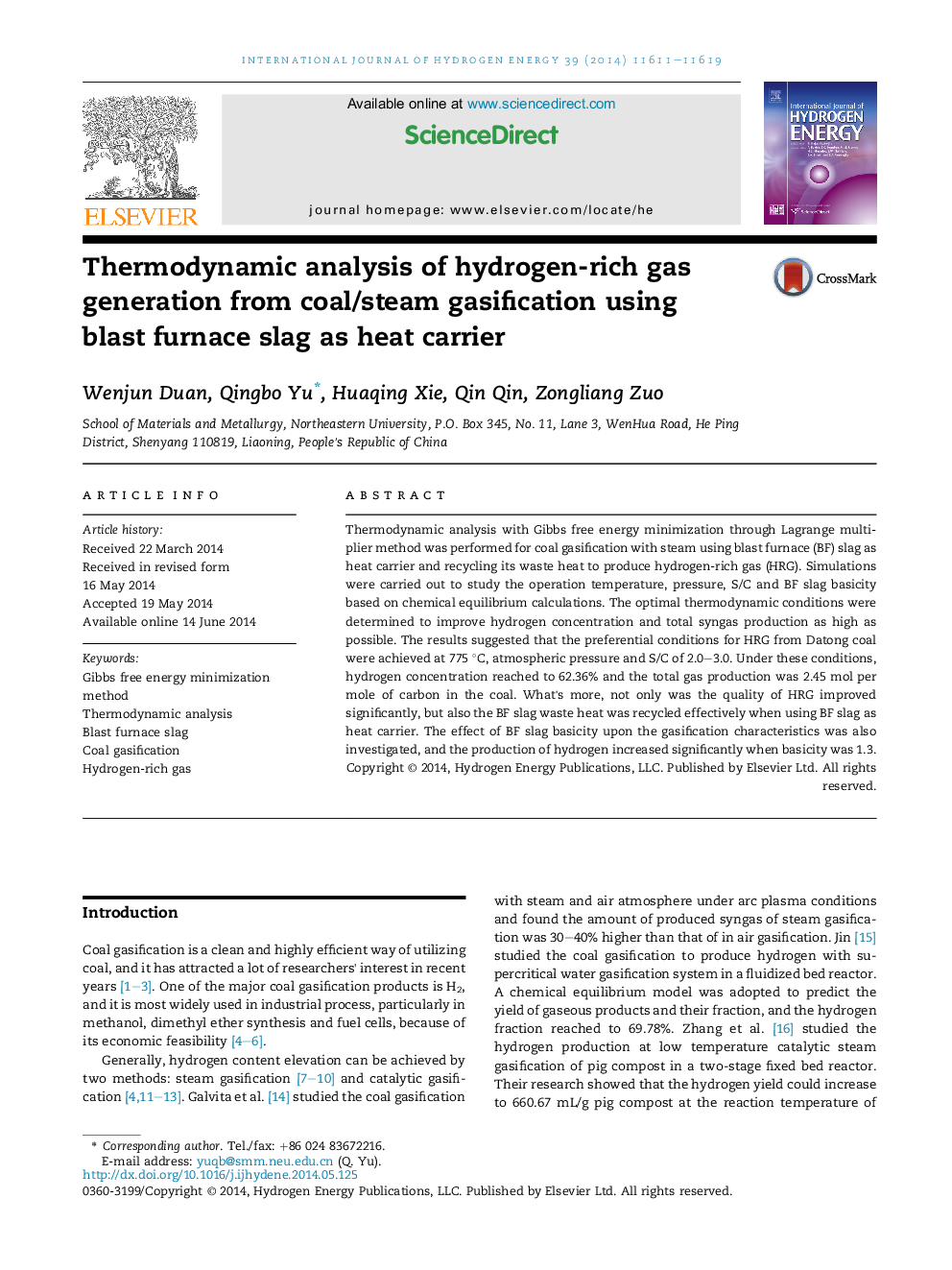| Article ID | Journal | Published Year | Pages | File Type |
|---|---|---|---|---|
| 1273180 | International Journal of Hydrogen Energy | 2014 | 9 Pages |
•The blast furnace (BF) slag waste heat was converted and utilized.•BF slag acted as heat carrier for reaction and helped to produce hydrogen-rich gas.•The optimal operations were obtained by thermodynamic analysis.•Effect of BF slag and its basicity on gasification were investigated.
Thermodynamic analysis with Gibbs free energy minimization through Lagrange multiplier method was performed for coal gasification with steam using blast furnace (BF) slag as heat carrier and recycling its waste heat to produce hydrogen-rich gas (HRG). Simulations were carried out to study the operation temperature, pressure, S/C and BF slag basicity based on chemical equilibrium calculations. The optimal thermodynamic conditions were determined to improve hydrogen concentration and total syngas production as high as possible. The results suggested that the preferential conditions for HRG from Datong coal were achieved at 775 °C, atmospheric pressure and S/C of 2.0–3.0. Under these conditions, hydrogen concentration reached to 62.36% and the total gas production was 2.45 mol per mole of carbon in the coal. What's more, not only was the quality of HRG improved significantly, but also the BF slag waste heat was recycled effectively when using BF slag as heat carrier. The effect of BF slag basicity upon the gasification characteristics was also investigated, and the production of hydrogen increased significantly when basicity was 1.3.
